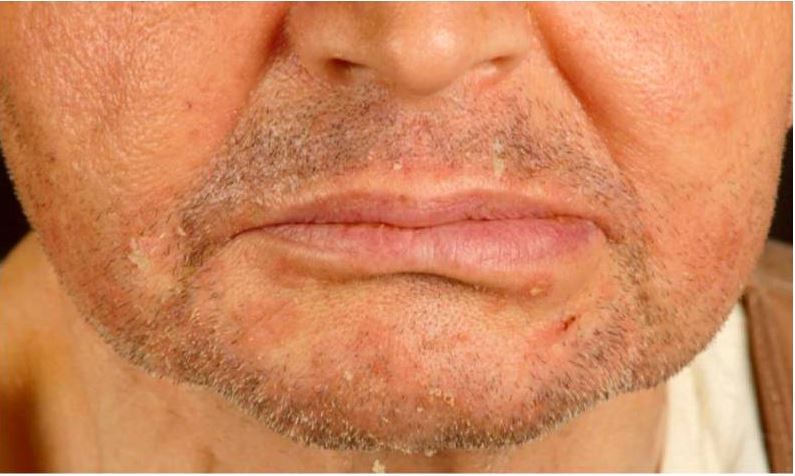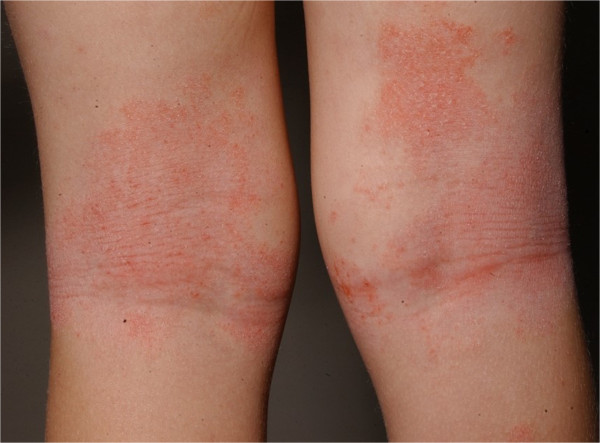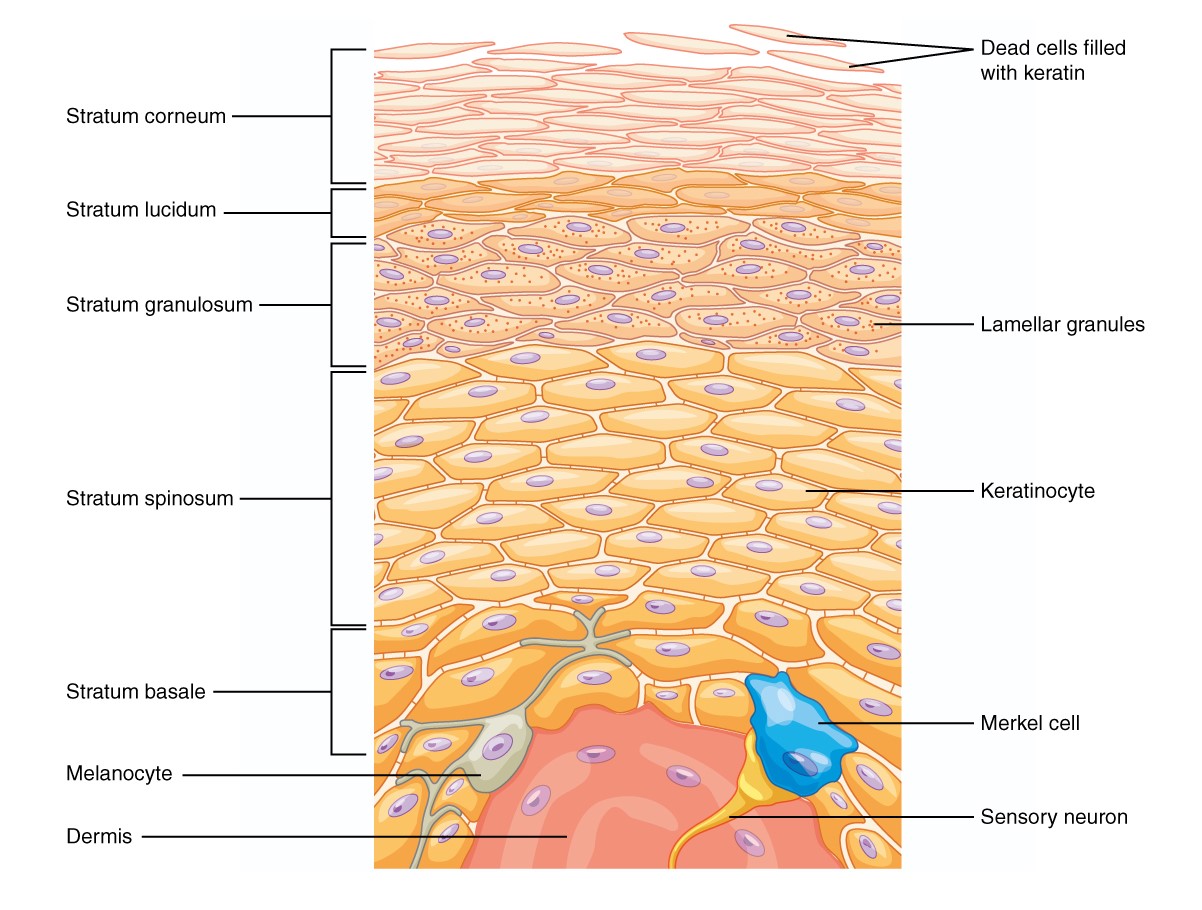Playlist
Show Playlist
Hide Playlist
Allergic Contact Dermatitis
-
Slides Dermatology Inflammatory Skin Diseases.pdf
-
Reference List Pathology.pdf
-
Download Lecture Overview
00:01 Here, we have allergic contact dermatitis. 00:04 As a differential, your atopic dermatitis. 00:09 Your operative word here will be contact. 00:12 What happened? Let’s take a look. 00:14 It’s a type 4 hypersensitivity. 00:16 So therefore, it would appear approximately a day to two days after the contact to that particular antigen. 00:24 Poison ivy is the classic example of allergic contact dermatitis. 00:28 The one that I’d given you earlier is nickel. 00:31 Therefore, that patient who had “allergies” to that nickel in the bracelet resulted in type4 hypersensitivity, which we then refer to as being allergic contact dermatitis. 00:42 Common sources, increased in workplace and hobbies hobbies based on whatever type of contact that you’re coming to. 00:48 So for example, if you’re a wilderness person and you’re out there in the wilderness and forced to whatever, then there’s every possibility that you might come across such plants, such as poison oak or ivy. 01:01 Morphology: Fairly well-demarcated erythematous and weeping plaques, intensely pruritic as you can imagine, may assume a linear distribution when due to contact with plants. 01:12 And literally, meaning to say that if you got stroked by your poison ivy, then along that line that you got stroked, guess what’s going to happen, you’re going to develop this type of, well, weeping plaques that are extremely pruritic. 01:29 Are we clear? What you want to keep in mind, obviously, I’m going to give you differentials, and as soon as you hear about dermatitis in your head now, you’re going to divide it into contact or atopic. 01:40 And under atopic dermatitis, remember there that it was exposure to the antigen, perhaps, to the environment. 01:47 And usually, with atopic dermatitis, you’re dealing with the triad of atopic dermatitis, asthma, and rhinitis. 01:55 This is contact dermatitis. 01:58 The common allergens include nickel, cheap jewelry, perhaps even. 02:02 So think about you’re going to a party and your significant other is now wearing whatever type of imitation jewelry, unbeknownst to him or her may then develop contact dermatitis. 02:15 You have chromates from leather or maybe perhaps neomycin, especially when dealing with topical antibiotics, and perhaps, from hair dye. 02:23 A very important one, which is para-phenylenediamine. 02:27 Important, isn’t it? All these things are extremely common in our society. 02:34 If you then take a look at your allergic contact dermatitis. 02:37 Here’s an individual with poison ivy. 02:40 You’ll notice that upon exposure that it’s almost like a linear type of pattern based on where the patient got in contact with this particular plant. 02:50 If you take a look at it, this look like weeping type of plaques. 02:55 Your management here, withdrawal of the offending allergen. 02:58 But you must find out as to what that allergen is. 03:01 Topical steroids for local type of reaction, and systemic steroids if there is widespread disease which is always a possibility.
About the Lecture
The lecture Allergic Contact Dermatitis by Carlo Raj, MD is from the course Inflammatory Skin Diseases.
Included Quiz Questions
A 30-year-old man developed a widespread rash 24 hours after returning from a camping trip in the woods. He has well-demarcated, erythematous, draining plaques that are intensely pruritic involving > 50% of the body surface area. His vital signs are normal and stable. What is the next best step in the management of this patient?
- Oral steroid agent
- Oral antifungal agent
- Oral antibiotic agent
- IV antibiotic
- Topical steroids and antibiotics
A classic example of what type of reaction is seen with contact dermatitis due to exposure to poison oak or poison ivy?
- Type IV hypersensitivity
- Type I hypersensitivity
- Type II hypersensitivity
- Type III hypersensitivity
- Anaphylaxis
Customer reviews
3,0 of 5 stars
| 5 Stars |
|
0 |
| 4 Stars |
|
0 |
| 3 Stars |
|
1 |
| 2 Stars |
|
0 |
| 1 Star |
|
0 |
Would like to see some discussion about investigations eg patch testing






